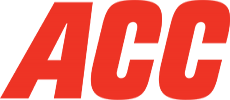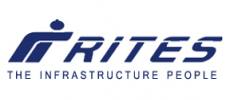13
March
OR models Advanced Analytical Tools to Optimize Supply Chain
In the past two decades of teaching and industry consulting, I have observed a big gap in the understanding of the utility of Operations Research (OR) models for practical decisions of the business world. While the OR academics are somewhat cut off from the higher priority problems of the real world, business executives are sceptical or completely unaware of the practical use of OR models. Some of the managerial scepticism about OR models is justified, as there are real barriers to the successful implementation of such tools which need to be overcome. However, our own experience of the past six years of developing and applying these models for real-world supply chain problems of a variety of industries have convinced us and our customers about their use. OR models: High-end Analytical Tools to Optimize your Supply Chain - This article aims to lift the veil of secrecy about OR models by responding to common apprehensions and providing examples of organizations that have broken the barriers to successful implementation and reaped direct business gains. The examples are drawn from our first-hand experience.
OR models and their benefits
OR models are based on an advanced set of mathematical optimization techniques called Operations Research. They are useful in analyzing and recommending decisions in complex situations where data is available but simpler approaches like managerial judgment or spreadsheet tools do not capture all factors relevant for complete analysis. For example, the planning and execution decisions of logistics, distribution, production and procurement in businesses with large scale and geographical coverage are complex. These problems have tens of thousands or more variables and constraints. Even when the data is available in well maintained IT/ERP systems, complete and correct analysis of these supply chain problems is often not possible with simpler approaches. This is where OR models become indispensable tools for support managerial decisions. Experience with the majority of successful real-world applications of OR models to supply chain problems has demonstrated the gains of cost, contribution and service level in the range of 2-30%.Ways in which OR models could be useful for a business
OR models could support strategy, planning and execution in each of the major stages in a supply chain:
a) Network Footprint Design: Location and sizing of production, storage and distribution facilities, for both major overhaul and minor tweaks.
b) Network Allocation Planning: Allocation of products and transport modes between facilities of suppliers, production, warehouses and customers, on monthly as well as a daily basis.
c) Inventory Replenishment: Safety stocks and reorder points for both finished products and procured items.
d) Fleet Planning: Fleet sizing at plants and warehouses, for both outbound dispatches and inbound deliveries.
e) Route Planning and Order Assignments: Daily planning of routes (direct and milk-run deliveries) and assignment of orders to vehicles, for both outbound dispatches and inbound deliveries.
f) Production Planning and Scheduling: Product mix, size and sequence of batches on a major production resources, on monthly as well as a daily basis. While supporting optimal plans and execution schedules in the above-mentioned supply chain areas OR models can help to achieve total optimization of the supply chain. Optimization can be achieved on the relevant KPIs – contribution margin, cost to serve, time to serve, product fill rate, and utilization of assets. Furthermore, if the business and operational requirements are modelled right, this optimization can be achieved under all relevant constraints, thereby yielding optimal yet practically feasible solutions. In addition to recommending optimal plans, the same OR models can be used to regularly provide valuable insights to senior management, such as:
·
Compliance Analysis:
- Overall compliance index which measures the deviation of actual execution from optimal plan, and the key factors causing this deviation.
- Bottlenecks Identification and Prioritization: Identification of those few operational constraints whose relaxation could result in large gains to the business.
- Yearly allocations of budgets and targets for various sales units, regions, warehouses and plants.
Despite the tangible gains offered by OR models, their active use in the industry remains scant. Only a few enlightened businesses have been able to break free of the following barriers and derive full benefits of OR implementation. These barriers could also be viewed as factors about which special care needs to be taken to ensure effective implementation of OR models.
i) Mapping ‘high impact’ supply chain stages on to ‘high impact’ OR problems:
Lack of clear notion about which are high impact stages in a particular industry’s supply chain leads to incorrect problem prioritization/diagnosis. Lack of clear notion about which decision problems and objectives could be most visibly impacted by OR models yields incorrect prescription. Identifying the two and mapping them for one’s own industry is the first strategic step senior management could take towards setting the agenda for OR led to systemic improvement.
ii) Any major decision problem cuts across several functions like logistics, sales, production, procurement, strategy: Therefore detailed business and operational requirements for scoping the problem should draw inputs from all these functions. Not doing so would likely result in incomplete scoping, hence less effective configuration and tailoring of OR models. On the contrary, by incorporating all relevant requirements, the OR models will generate outputs which are optimal yet practically feasible to implement. Moreover, those outputs will have an easier buy-in of internal stakeholders as their concerns would have already been reflected.
iii) Using the OR model for complete decision and improvement cycle, i.e. planning, execution, compliance tracking of KPIs, and bottlenecks identification/removal:
An optimal plan is merely an immediate output of an OR model. Quite often, such a plan might be for a short period and based on certain forecasted input parameters. Actual decisions are likely to deviate from such a plan as several parameters turn out to be different from forecasts (leading some to believe that such forecast based optimization is not useful). Therefore, a longer period optimal plan needs to be followed up with a shorter period or real-time optimal schedules generated from the same OR model applied with additional micro-level constraints and more accurate estimates of parameters. Subsequently, the post-facto analysis could be carried out with the same OR model to quantify the factors contributing to the deviations from the optimal plan to optimal schedule to actual execution. This analysis could point to the few major factors which need to be controlled in the future – sort of KPIs to track and assess the performance of various functions. Furthermore, different operational constraints of the model can be relaxed to identify the few crucial constraints (bottlenecks) which the senior managers ought to remove in order to accrue maximum business gains.
iv) Identifying data sources, integrating with existing IT/ERP systems, and building data validation interfaces:
If certain input data required for an OR model needs to be entered manually or some of the data has errors, the process of operating the model could be frustrating. While the OR model should ideally be integrated with data sources like existing IT/ERP systems, full input automation will often require additional work of developing standard templates and data maintenance for those parameters which are not reliably stored in the ERP. In addition, some of the data stored in the ERP might be incorrect or inconsistent. Therefore appropriate data validation rules need to be automated in the form of interfaces which promptly highlight any problems with the data.
v) Making a time-phased roadmap of implementing OR models and necessary changes in processes and organization: Finally, the absence of a complete perspective of the supply chain and of the different OR modelling pieces which could solve the whole jigsaw puzzle could create conflicting views and difficulty in building consensus. Also, any significant OR model implementation may not be fully successful if it is not accompanied by facilitating changes in certain operational and organizational processes (which are reflected in a new standard operating procedures). Therefore, preparing a roadmap of implementing various OR models which provide a total vision of the improvement reflects the priority of ‘high impact’ supply chain stages and decision problems, and incorporates necessary changes in organizational and operational processes is a crucial step towards desirable change management.
Getting started with implementation
As must be obvious from the previous discussion of barriers, the best way to get started with optimization enabled supply chain improvement is to first identify the combinations of ‘high impact’ supply chain stages and OR decision problems; then prepare an implementation roadmap of relevant OR models and accompanying process changes; and subsequently scope each model and delineate input data, data sources, validations, output reports, and IT integration aspects. Preparation of this blueprint will go a long way to assure the right implementation of OR tools and consequent gains for the business.Author,
Rahul Pandey


















